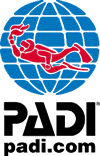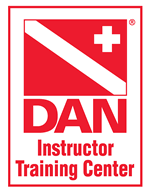PADI Open Water Diver
PADI Open Water Diver
What do I need to get started?
As a minimum, you want your own mask, fins and snorkel when you start diving in the PADI Open Water Diver course. These have a personal fit, and we can help you choose ones that have the fit and features best suited to you. It’s recommended that you invest in your equipment when you start your course because:
- you’re more comfortable learning to dive using gear chosen
- you’re more comfortable using gear fitted for you
- divers who own their own gear dive more
- having your own gear is part of the fun of diving
Course Materials
You will receive as part of the course:
- your own copy of the Open Water Diver manual, multi-media CD-ROM or Enhancement Pack for eLearning
- Recreational dive planner & instructions for use
- use of diving equipment during confined water training
- a personal logbook to track your dives
Where can I Dive?
Once you’re certified, you can practically dive anywhere! Of course, the Open Water Diver course is not intended to make you an expert from the start. Your diving experience, training, site accessibility, conditions and interests will determine where, when and what kind of dives you do. Some people only dive while on vacation down south while other dive year-round here in Ottawa (including the winter!) Throughout the program, we will introduce you to different type of diving and training programs that may interest you beyond the basic training.
What’s Involved
The PADI Open Water Diver course is divided into 3 modules:
- Knowledge Development
- Confined Water Dives
- Open Water Dives
The knowledge development component teaches you the basic theory behind diving such as how pressure affects your body underwater. The confined water component is where you will develop your basic in-water scuba skills such as clearing your mask of water as well as some emergency skills. In the open water component, you will repeat the skills you learned during confined water training but in an open water setting. This is done as a 2-day activity (usually Sat/Sun). If you are doing your training during the winter months, this part can also be completed down south if you are planning to travel before the spring.
What else?
PADI programs are performance-based meaning that there is no time limit to completing them. Some people understand the theory right from the start but have difficulties matering the in-water skills. Others breeze through the course. The programs are not designed to be difficult and are certainly not rocket science, but cover the important information that you need to know and do. A typical Open Water course would run for about 3 weeks, twice a week depending on the availability of the pools.
Physical: For safety, all students complete a brief questionnaire that asks about medical conditions that could be a problem while diving. If none of these apply, you sign the form and you’re ready to start. If any of these apply to you, as a safety precaution your physician must assess the condition as it relates to diving and sign a medical form that confirms that you’re fit to dive.
Download the Medical Statement PDF
Waterskills: Before completing the PADI Open Water Diver course, your instructor will have you demonstrate basic waterskill comfort by having you swim 200 metres/yards (or 300 metres/yards in mask, fins and snorkel). There is no time limit for this, and you may use any swimming strokes you want. You will also float and tread water for 10 minutes, again using any methods that you want.











